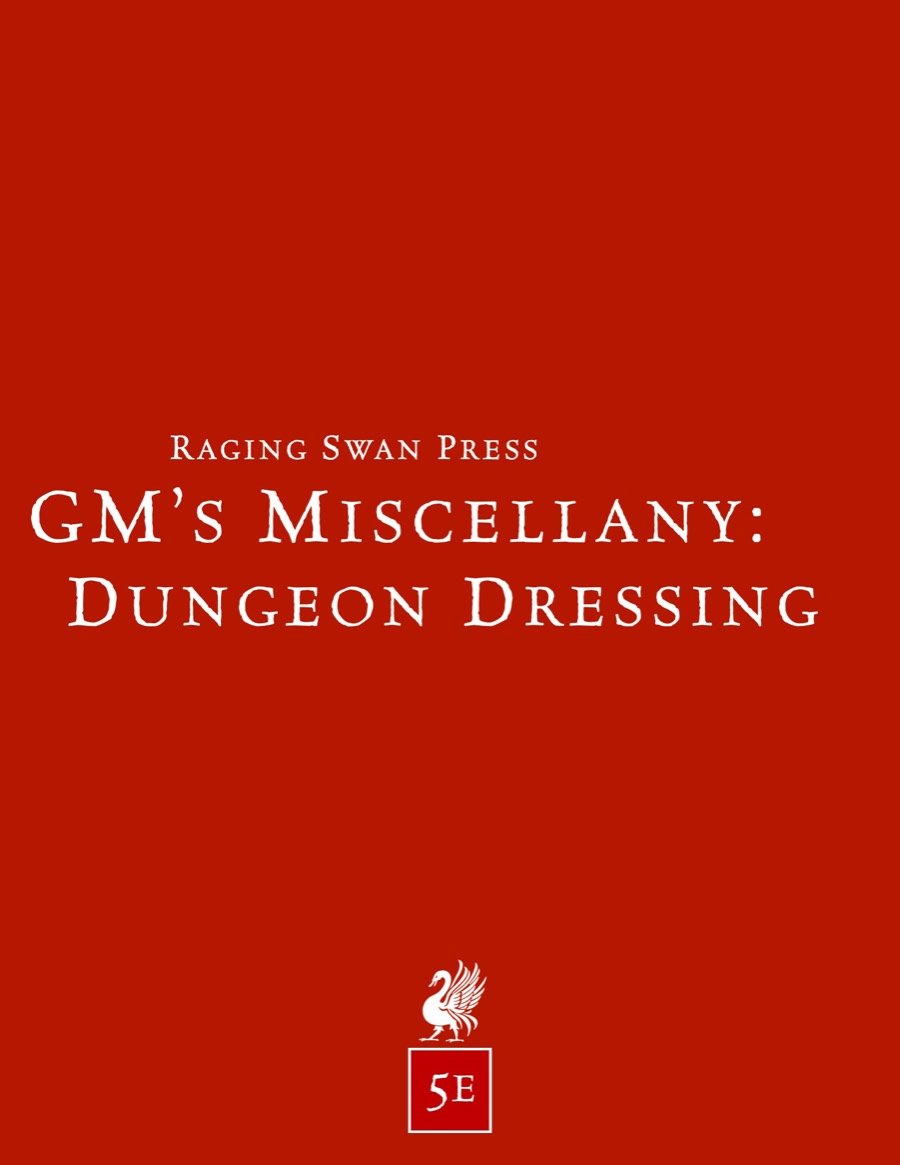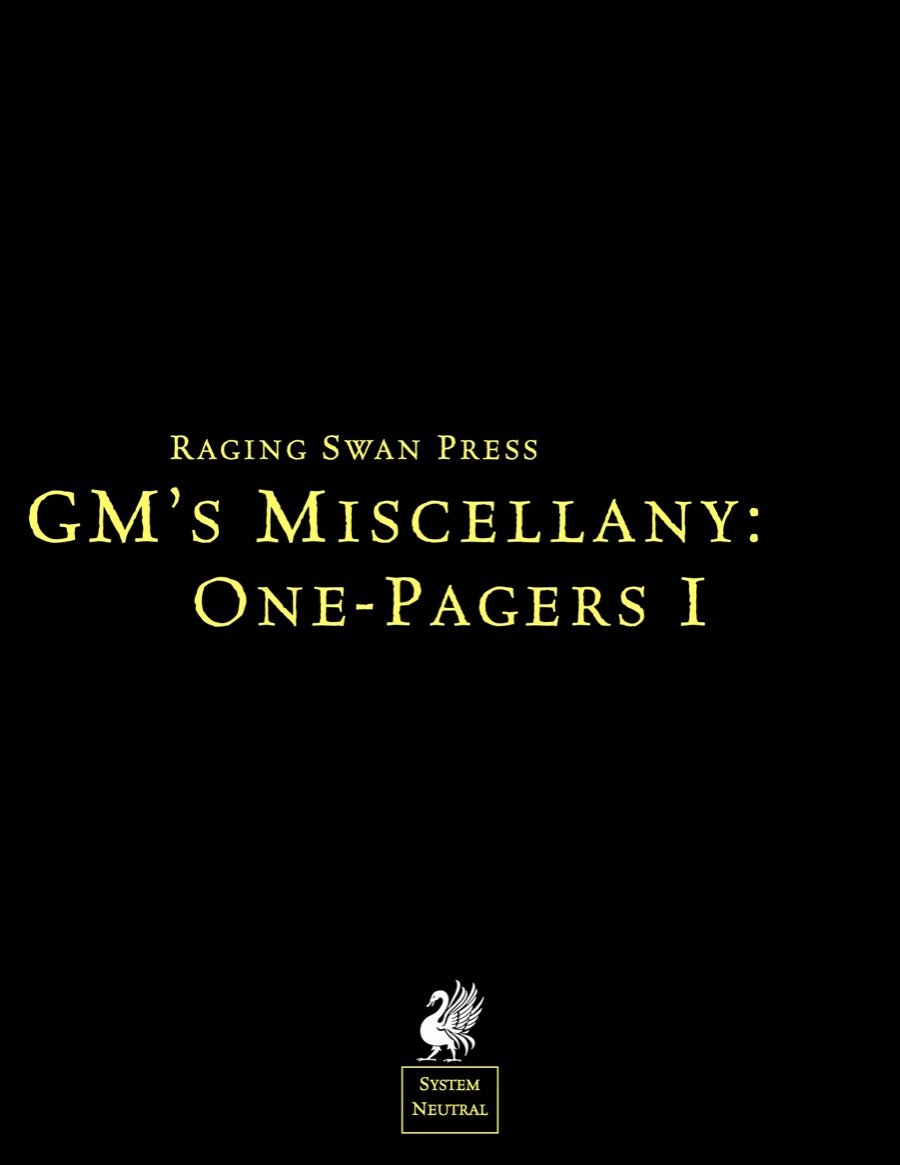Dungeon Dressing: Altars
Altars dedicated to dark, forbidden powers are a staple of many fantasy dungeons. Here, evil high priests officiate over bloody, blasphemous services or cultists gather to worship their terrible patron. Such locales are thus often an excellent place to find and slay said evil-doers or to recover their hidden treasures. A few such locales have even established a tenuous link with the deity itself, and strange, odd effects occur in their immediate vicinity.
You can download this material for free as a .pdf and .txt file by hitting the button at the bottom of this post. You do not need to give us your email or set up an account.
If you enjoy this article, sign up to the Sunday Supplement—our weekly newsletter—so you don’t miss any other free GM's Resources!
Major Features
An unholy symbol is carved into the front of the altar, in exquisite detail.
The altar is made of very rough, porous rock. Blood has soaked into the pores giving the altar a mottled brown and black appearance.
The altar is hewn from black, glittering stone. Its edges are rough and sharp.
The altar slopes slightly downwards in one direction; blood encrusts the lip at the lower end.
Blood-encrusted drainage channels crisscross the altar’s upper surface and run to two small fonts, one at either end of the altar. Both contain congealed blood.
The altar has a secret compartment. Pressing a small skull (or other minor craved decoration) opens the compartment’s lid.
The altar hides a secret compartment. Pressing an unholy symbol into a shallow depression behind the altar opens the compartment.
Intricate scrollwork decorates the entire altar. Religious symbols and images of the god are hidden within.
A large carving of religious significance decorates the front of the altar.
Niches in the front of the altar hold grinning skulls. Streaks of dried blood cover each skull.
The altar stands upon a five-foot-high stepped dais.
Pillars depicting the altar’s patron deity flank the altar. Each is well-detailed and glowers down over where the worshippers gather.
A continual flame burns upon the altar’s surface, wreathing the surrounds in flicker light.
Stout manacles are mortared into the altar. The key to the manacles is hidden in a grinning skull carving on the rear face of the altar.
The altar stands in a shadowy, cramped alcove hidden behind a lurid tapestry. Intricate carving and scrollwork cover the walls.
Niches in the rear of the altar hold books and other religious paraphernalia.
The altar is hollow and serves as the tomb of a devout worshipper. The altar’s lid can be lifted off to get at the tomb (and remains).
Many small holes pierce the altar. Wind blowing through the holes creates a whining sound.
The front of the altar is carved to represent a demonic head. Small red gems serve as its eyes and its tongue protrudes obscenely.
Fused bones form an armour of sorts over the altar. The bones are those of previous priests and other devout worshippers.
Minor Features & Dressing
Several half-burnt candles stand in pools of dried wax on the altar.
A skull with its top cut off sits on the altar. A huge candle emerges from the skull.
Deep piles of smashed and ground bones cover the altar and the surrounding floor. A shattered skull lies at the centre of each pile.
A pile of skulls decorates the altar; several skulls bear signs of violence.
Several small chalked pentagrams used to aid in summoning evil spirits decorate the altar’s top.
The surface of the altar is chipped and dented.
Shards of broken manacles lie on the altar.
A skeleton lies atop the altar.
Shards of a curved bloodstained dagger lie on the floor in front of the altar.
Cobwebs cover the altar; small spiders scuttle about the webs.
Mould sprouts from several large bloodstains on one side of the altar. The stains are old and dry.
Fine manacles are mortared into the altar.
Insects live in the cracks around the altar and feed on sacrifices’ blood.
A mouldy cloth covers the altar.
The altar is scorched and burnt. Charred bones and ash cover its surface.
The altar has been deformed by a stone shape.
A pool of dried melted wax almost covers the altar. Red and white wax mix to form a lurid smear of colour.
Luminescent fungus grows over the altar giving it, and its immediate surrounds, a dim green glow.
Two blackened skeletons lie in front of the altar.
Holes stud the altar’s flanks; they once held small gems but are now empty.
Credit
This is a short system-neutral extract from GM’s Miscellany: Dungeon Dressing. The book is available in 5e, System Neutral and Pathfinder 1 editions. The OSR edition will be available in early 2023.
Get the Free Download
Download this post by hitting the button below—you’ll get a zip file containing a lightweight one-page PDF and a superlight text file for your digital GM’s folder or virtual tabletop (VTT).
If you’ve found this resource useful, please let me know by leaving a comment. And also leave a comment if you have a suggestion to make this kind of post better.


